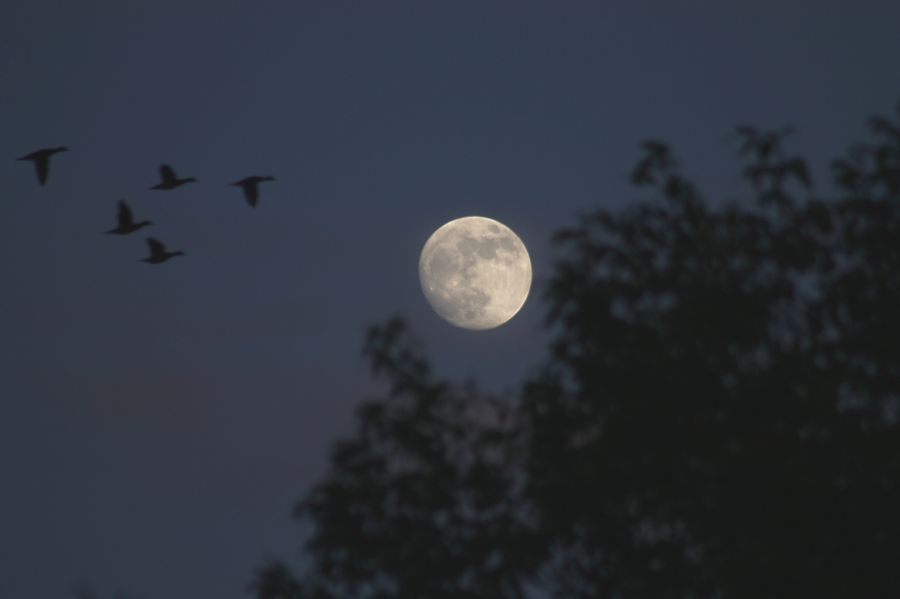The moon is by far the most observed object in the sky.
Whether spotted during the day when mostly fully illuminated or gazed upon at night, our natural satellite amazes us. For centuries the moon has been portrayed in works of literature, paintings and songs. There are even ancient artifacts of a flat piece of animal bone with notches etched into it. The cave dweller at the time was recording the ever-changing lunar phases.
Because of its 29.5-day rotation around the earth from full phase to the next full phase, we see a slightly different face each night. This is the best time to examine the lunar terrain with a telescope as long shadows drape across the terminator – the dividing line between the lit and unlit side of the moon.
When the moon rises in the east at the same time the sun sets in the west, it appears perfectly round and is now 100% illuminated. By the way, the dark band rising in or near the moon is the Earth’s shadow. The full moon is the worst time to examine it with a telescope as the moon appears one-dimensional – a circle with smaller circles on it.
We do not just call it the full moon. Each month of the calendar year is assigned a name. The most common reference we have heard is the Hunter’s Moon in October but there are eleven others. Dating back hundreds of years, some early Native American tribes only used the four seasons as their calendar, while other tribes adopted a 12-month system of full moons reflecting the conditions of that time of year.

The various names given for each month are still found in the Farmer’s Almanac. Notice the pattern of seasonal change from month to month:
January – The Full Wolf Moon, February – The Full Snow Moon, March – The Full Worm Moon, April – The Full Pink Moon, May – The Full Flower Moon, June – The Full Strawberry Moon, July – The Full Buck Moon, August – The Full Sturgeon Moon, September – The Full Corn or Harvest Moon, October – The Full Hunter’s Moon, November – The Full Beaver Moon and December – The Full Cold Moon.
There are times when there are two full moons in the same month. One appears on the first or second of the month with the assigned name while the second full moon is seen on the 30th or 31st. This is called the Blue Moon occurring about every thirty months or so.
Another term we hear in the news is a Super Moon. Coined by an astrologer back in 1979 it is the combination of the Full Moon and its closest approach to the Earth.
The moon has an elliptical orbit with a 50,000 km variance. During a Super Moon, it appears 14% larger and 30% brighter than when it is farthest from us.
The moon is tidally locked to the Earth so we only see one side. So the next time you look at the moon, you are looking at the exact same face as did your ancestors dating back hundreds of years.
Clear skies,
Gary Boyle

Known as “The Backyard Astronomer.” Gary Boyle is an astronomy educator, guest speaker and monthly columnist for the Royal Astronomical Society of Canada as well as past president of the Ottawa Centre of the RASC. He has been interviewed on more than 50 Canadian radio stations as well as television across Canada and the US. In recognition of his public outreach in astronomy, the International Astronomical Union has honoured him with the naming of Asteroid (22406) Garyboyle. Follow him on Twitter: @astroeducator, Facebook and his website: wondersofastronomy.com

















